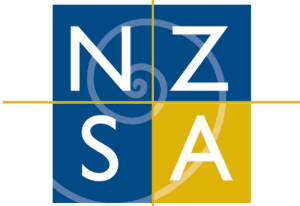A cluster of ‘modest’ accounts: what KiwiSaver balances really look like
In what’s believed to be an industry first, the NZ Society of Actuaries has produced a report that analyses account-level data for a large segment of the KiwiSaver market.
Tuesday, July 12th 2022, 6:35AM
by Jenni McManus

Until now, nothing been published about the actual balances of KiwiSaver’s 3.09 million members, with most statistics focusing on averages. For example, the FMA’s annual KiwiSaver report for 2021 says the average balance across all funds is $26,410. Previous surveys of KiwiSaver accounts have been limited to average balances, total fund size and total contributions.
But averages don’t tell the whole story, says Ian Perera, the convenor of RIIG (the Retirement Income Interest Group, a subgroup of the NZ Society of Actuaries) and are “not particularly helpful” when it comes to KiwiSaver.
They tend to be higher than the median, which produces a more realistic picture as a few large balances can skew the average. “You learn a lot more by understanding the differences than by just taking the average,” he says.
RIIG’s survey and analysis focused on how individual account balances are distributed, revealing a cluster of low KiwiSaver balances at the bottom of the scale and a “tail” of large balances, including a few outliers of more than $1 million, at the other end.
So, for most members the balances are “modest”, meaning that for those near retirement, NZ Superannuation will still be a key part of their income, Perera says. The median balances in RIIG’s study for those aged between 60 and 64 were $38,000 for men and $31,400 for women. In the 64-84 age group, 17% of men and 13% of women have balances of more than $100,000.
RIIG’s information was gleaned from six KiwiSaver providers which supplied anonymised data about the accounts they manage for members aged 45+. The providers included bank-owned funds and specific fund managers. All are among the top 20 providers as of 31 March 2021 and three are among the top five. Information was supplied on each member’s date of birth, balance and fund type.
The first finding was no surprise. Men are more likely to have larger balances than women and are significantly more likely to have the largest balances: 13% of men in the 45-64 group have more than $100,000 in their accounts compared with only 6% of women. And at the other end, women are more likely to have balances of less than $50,000: 74% compared with 64% of men.
When it comes to fund choice, however, gender does not appear to be an indicator of tolerance for risk – at least, not until members hit 65. “The data does not support the idea that women between 45 and 64 are more conservative investors than men,” Perera says.
Across the board, the study found that most investors aged 45-64 choose conservative funds, with only 35% of women and 39% of men invested in funds holding at least 60% of growth assets.
The rule of thumb appears to be the lower the balance, the lower the risk tolerance. For those with account balances between $10,000 and $20,000, 45% of accounts held by men and 47% held by women are in funds with only 30% of growth assets. Only 21% of men and 18% of women are in more aggressive funds (75%-100% in growth assets).
When the government contribution of $521.43 a year is added, men clearly contribute more to KiwiSaver, with 46% of men and 33% of women putting in more than $4000. At the other end of the scale – annual contributions of less than $3000 – women make up 52% of the group compared with 43% of men. Perera describes these results as “not unexpected” as men in the 45+ population usually earn more than women, and KiwiSaver contributions are primarily made as a percentage of salary.
When it comes to drawing down KiwiSaver in retirement, Perera says low balances in the 55-64 age group mean that for most people, individual financial advice is not cost-effective. Most will need to rely on generalised guidance. But managing drawdowns is “one of the hardest problems in finance”, he says.
The way up is almost straightforward: save more, ensure you’re in a diversified fund and get your risk settings right. “But when it comes to ‘how much can I spend?’ there are so many different factors to consider. You don’t know how long you’re going to live, and inflation could be more significant. It’s a harder problem in some respects than saving.”
Perera says he hopes the FMA and Retirement Commissioner can use these survey results to develop a larger dataset that can be analysed to form a whole-of-sector view.
Now that it has data for the 45+ age group, RIIG’s next project will be to figure out what current KiwiSaver balances might look like when these members reach retirement.
| « Financial Services Council defends KiwiSaver after criticism | $6.3 billion wiped off KiwiSaver » |
Special Offers
Comments from our readers
No comments yet
Sign In to add your comment
| Printable version | Email to a friend |


